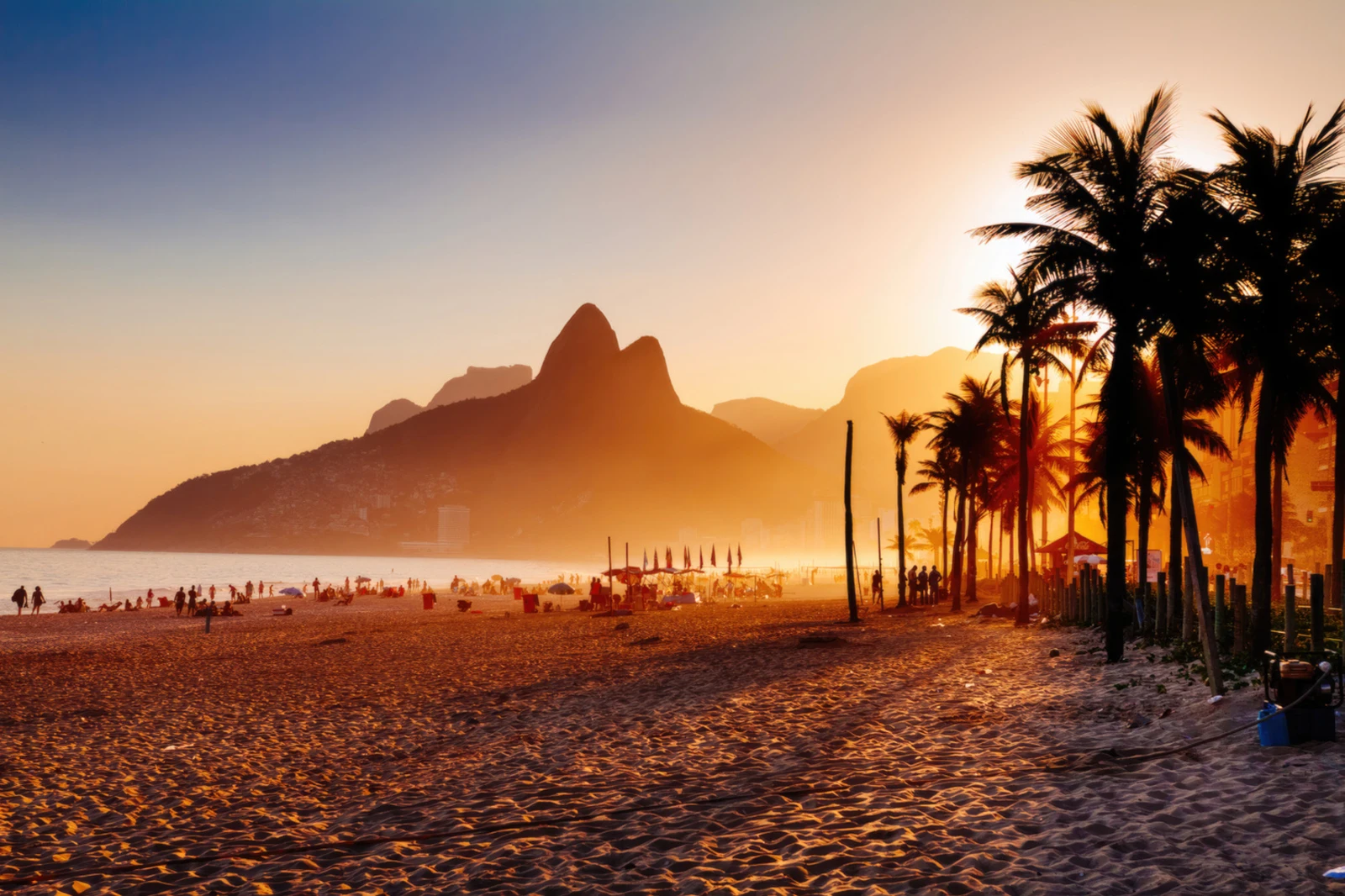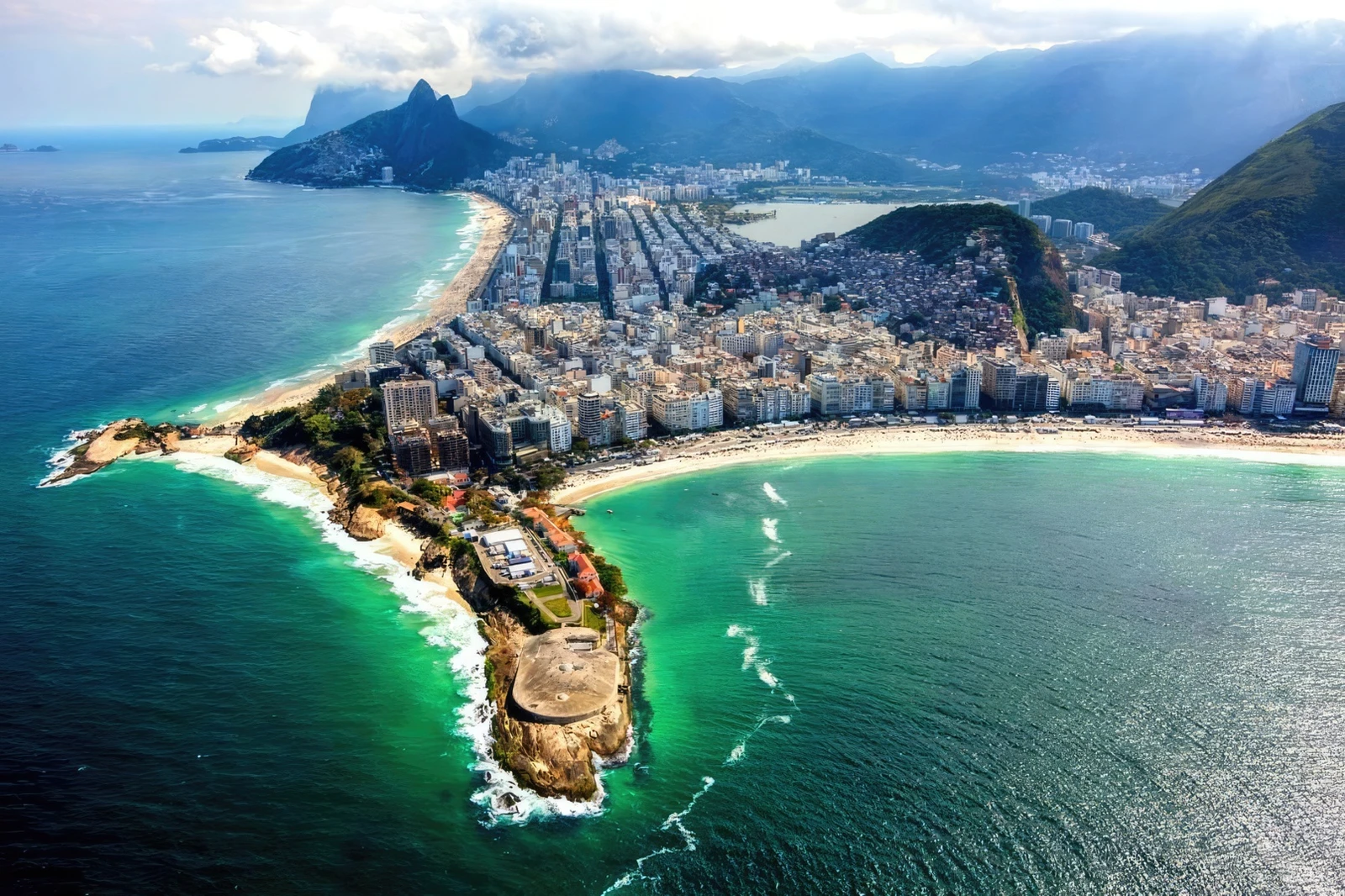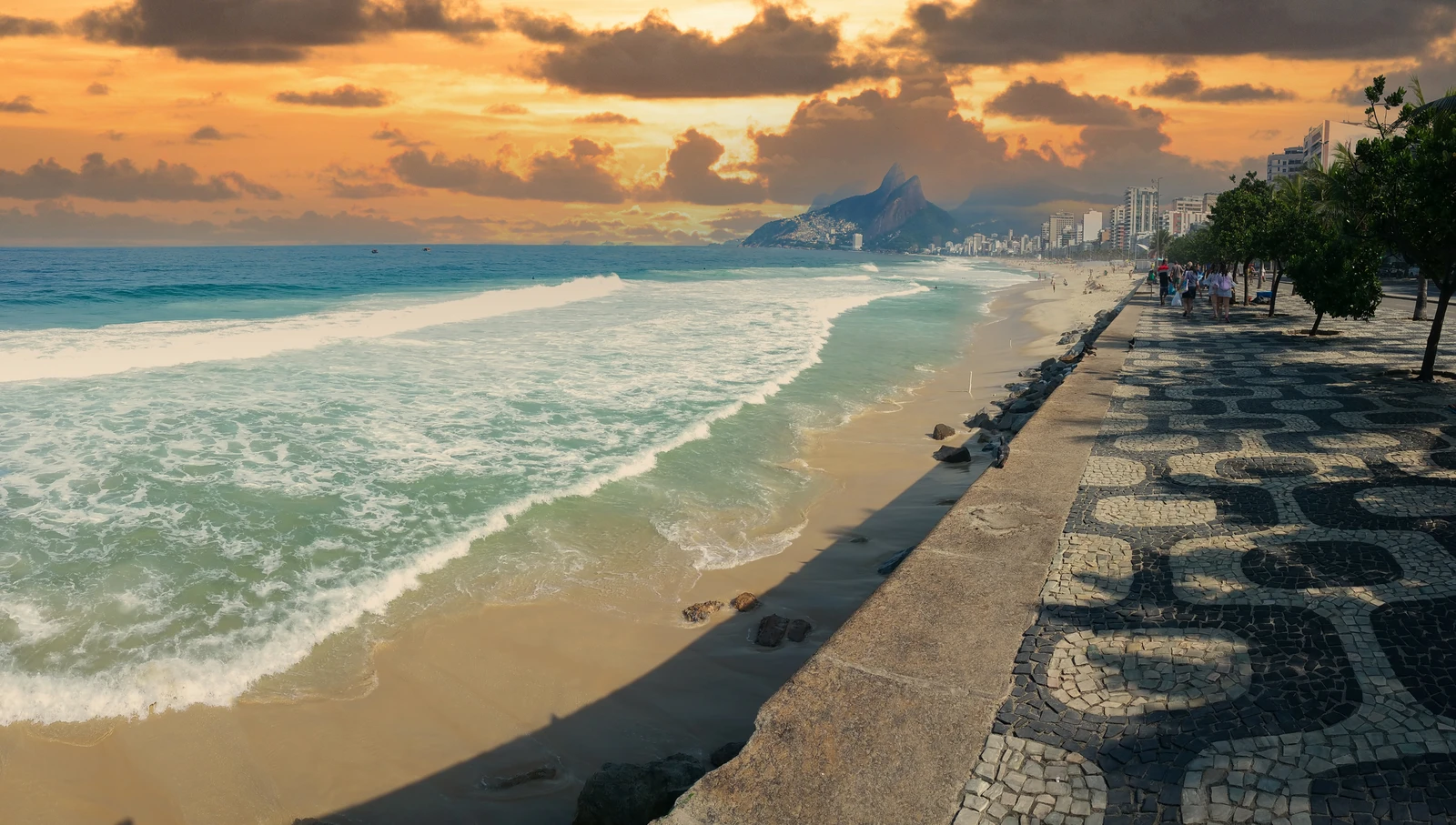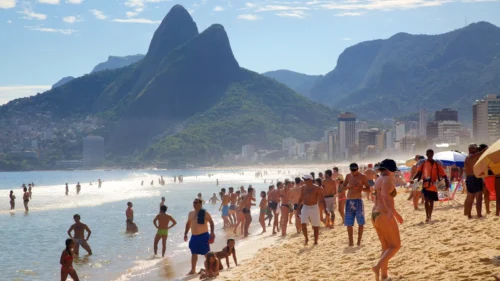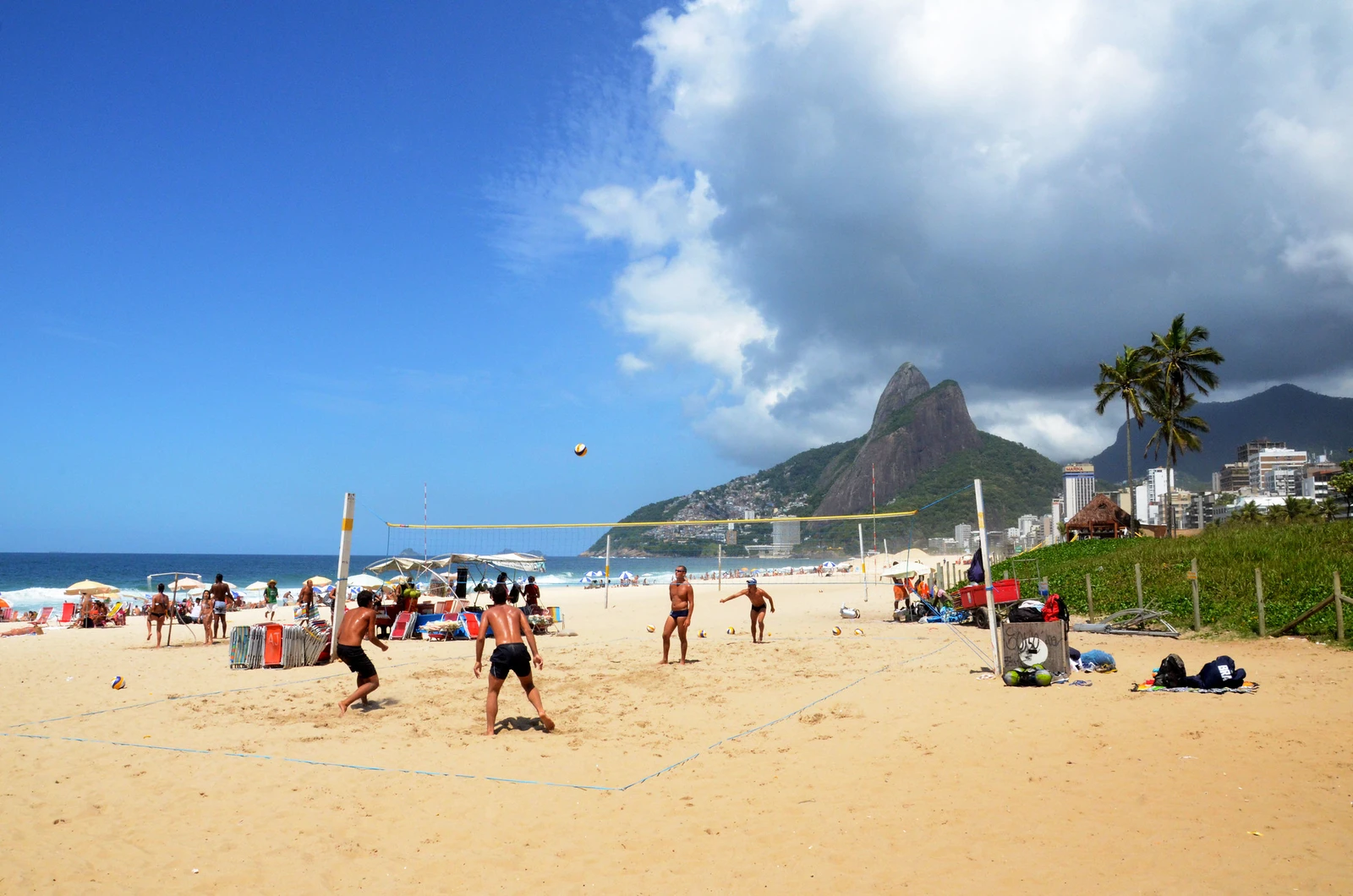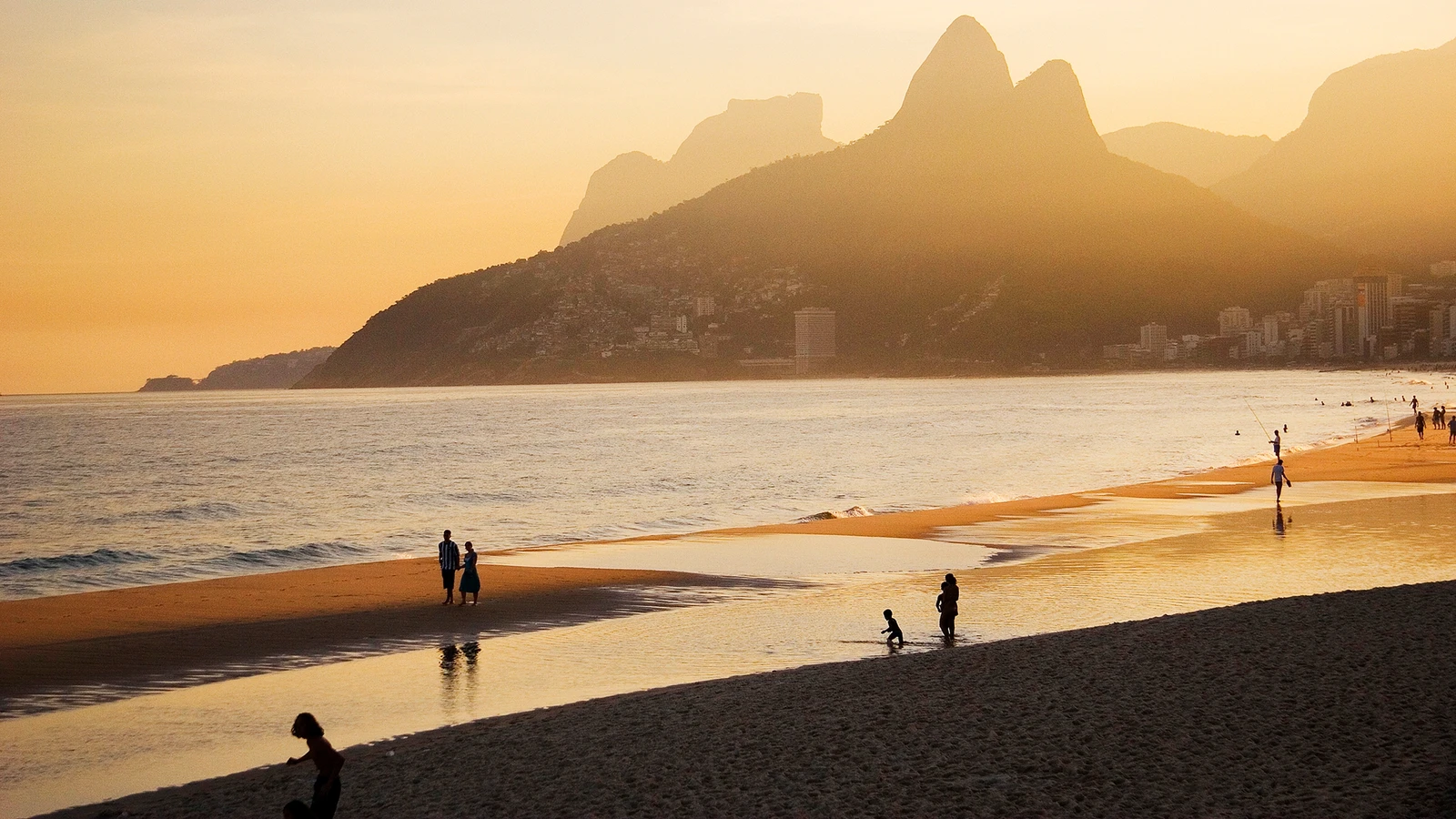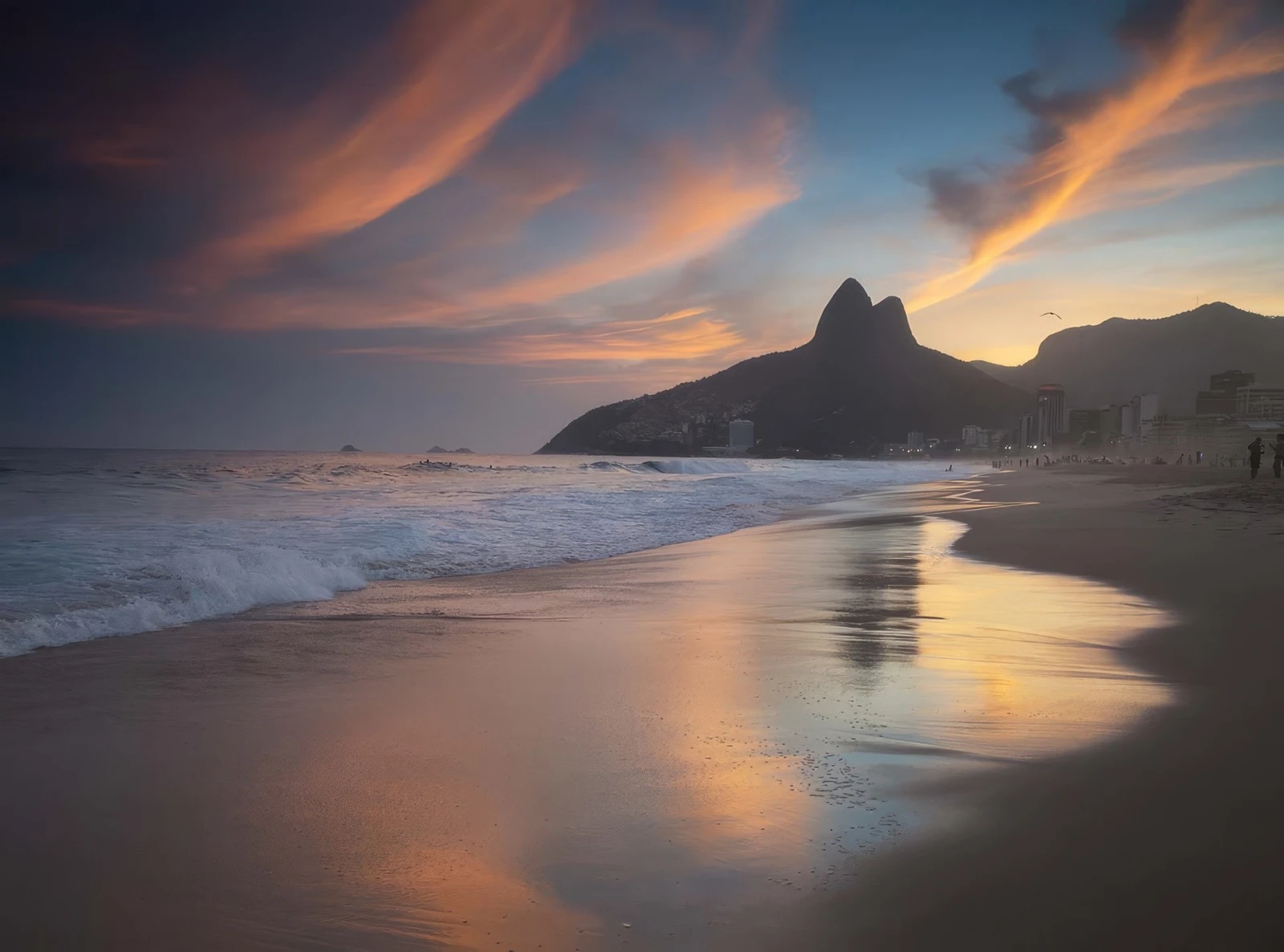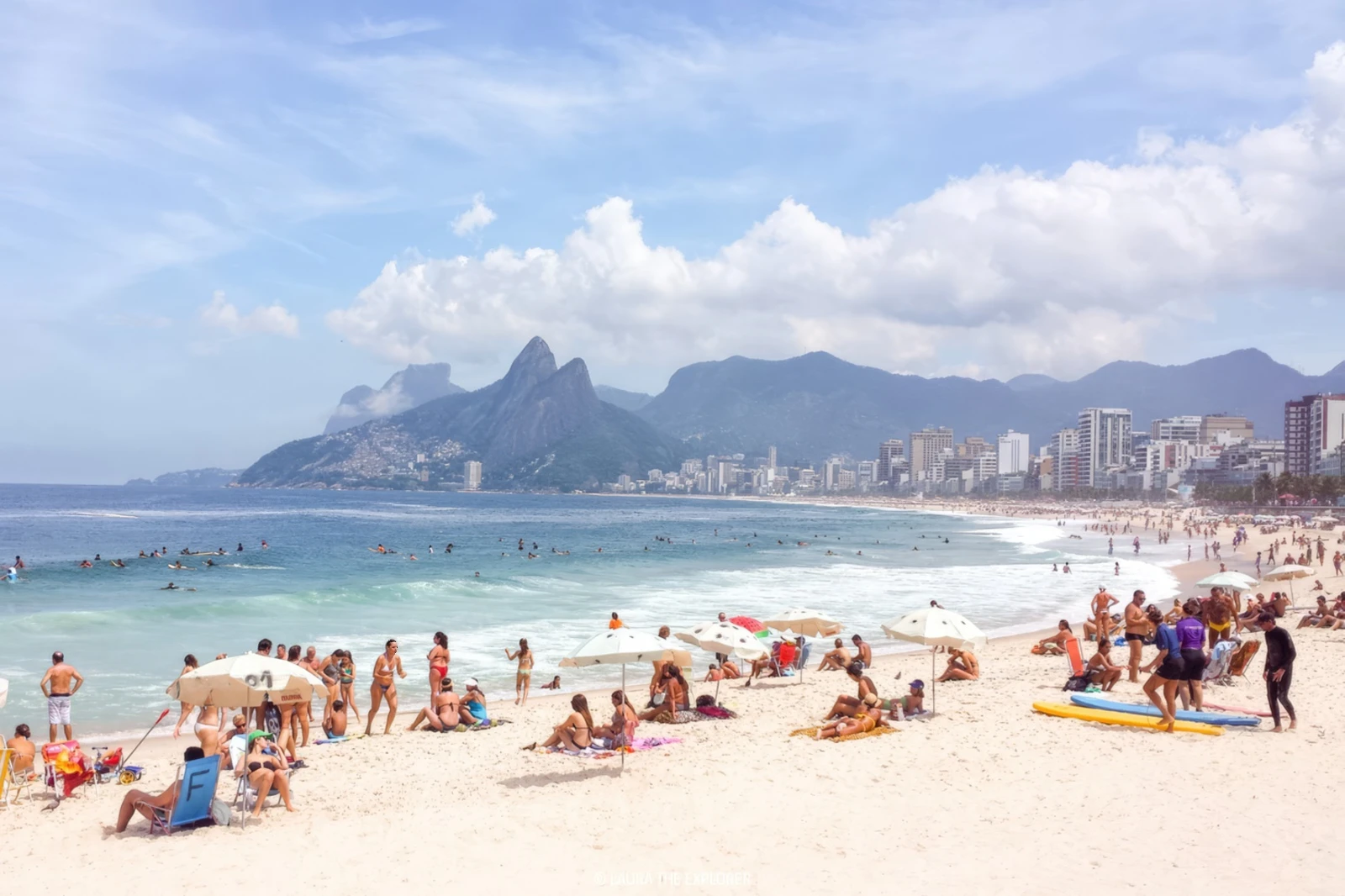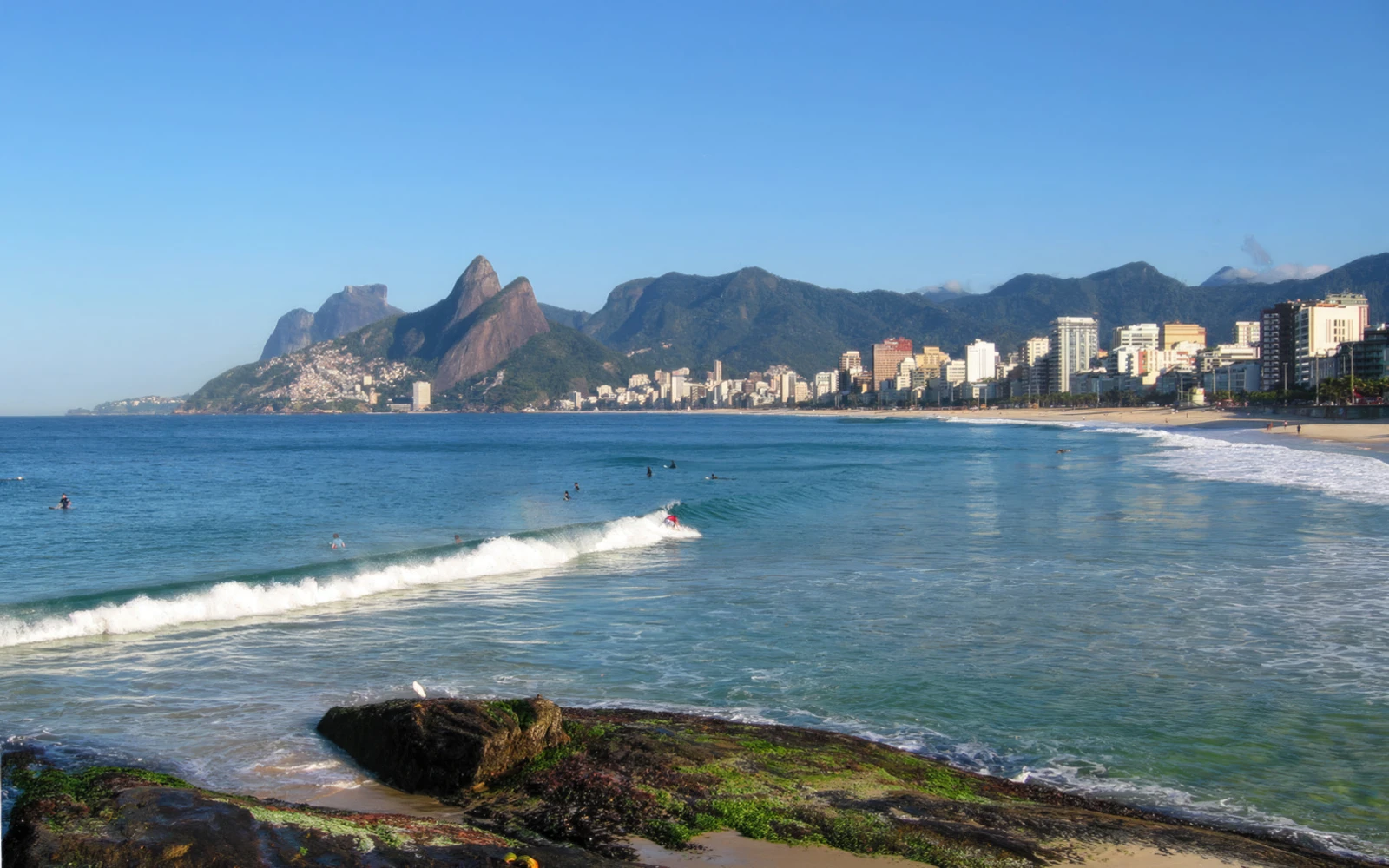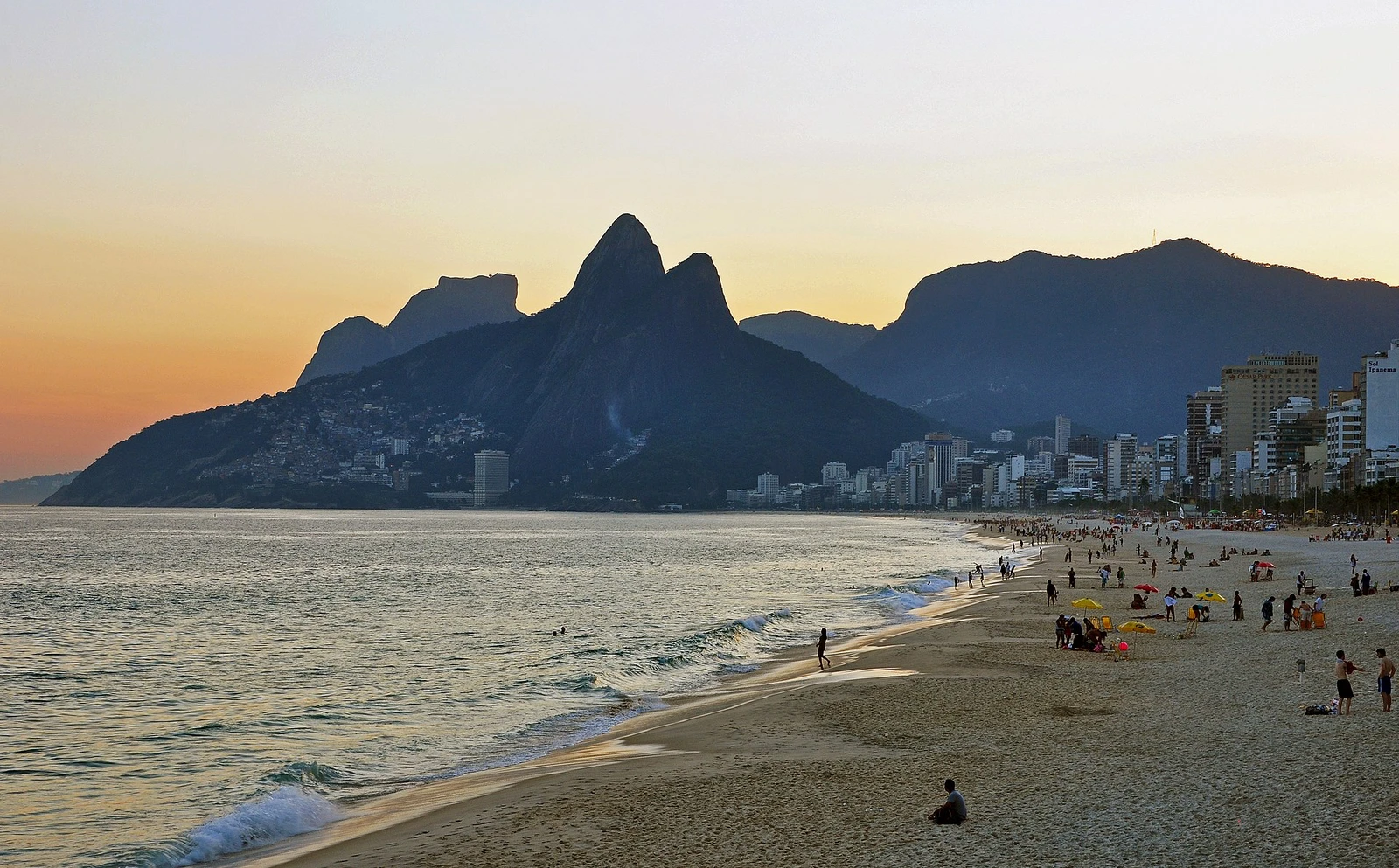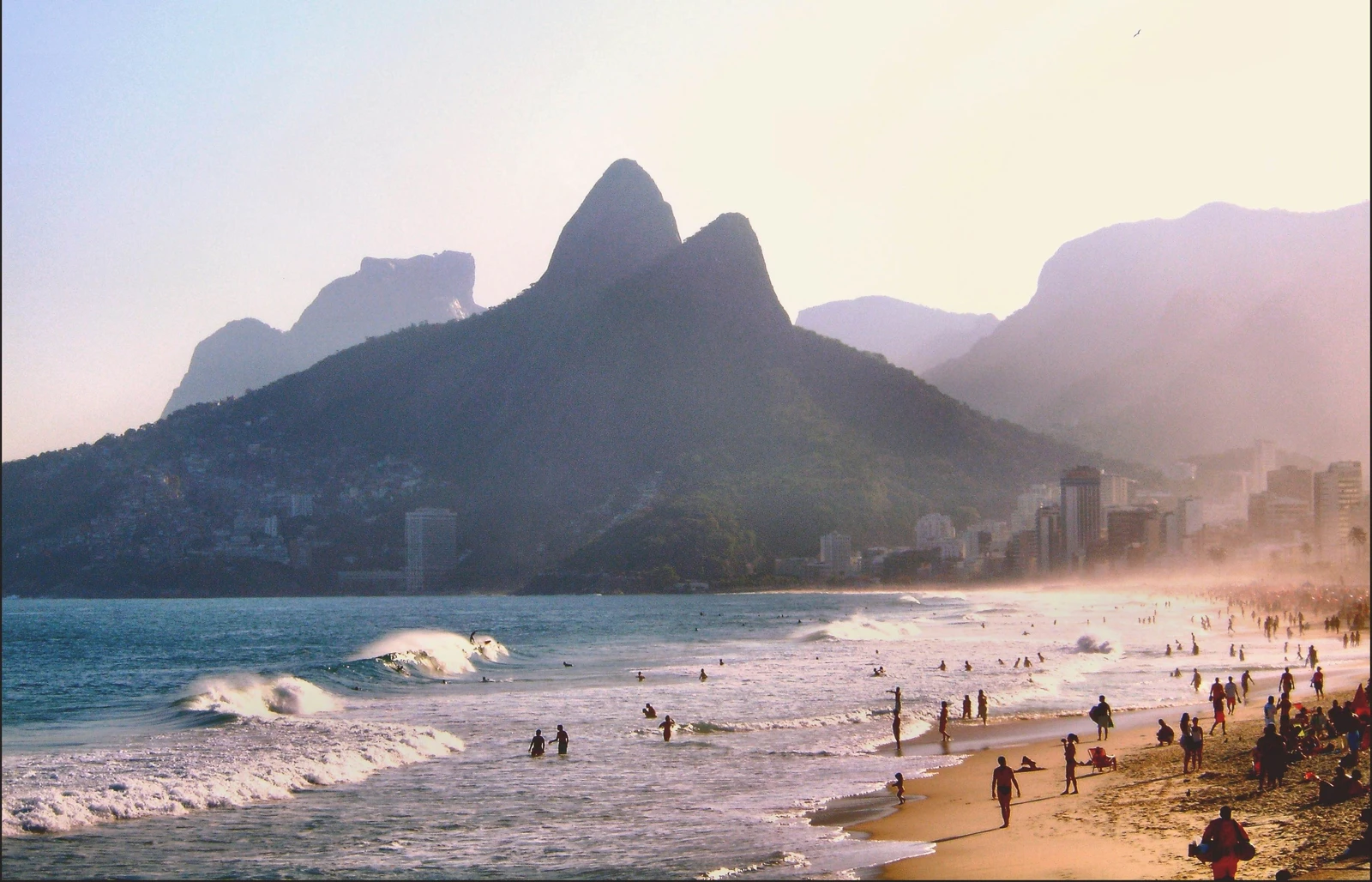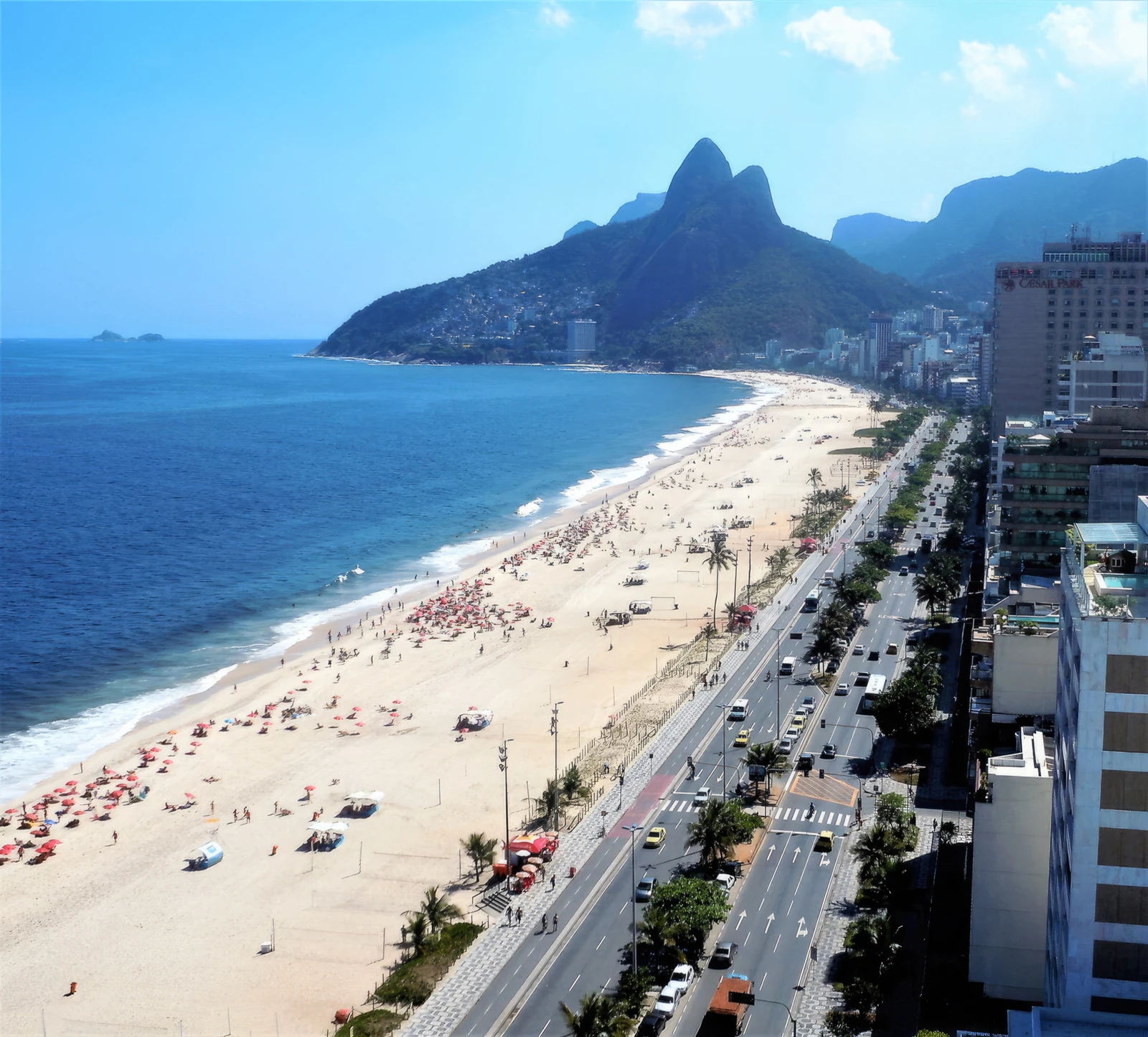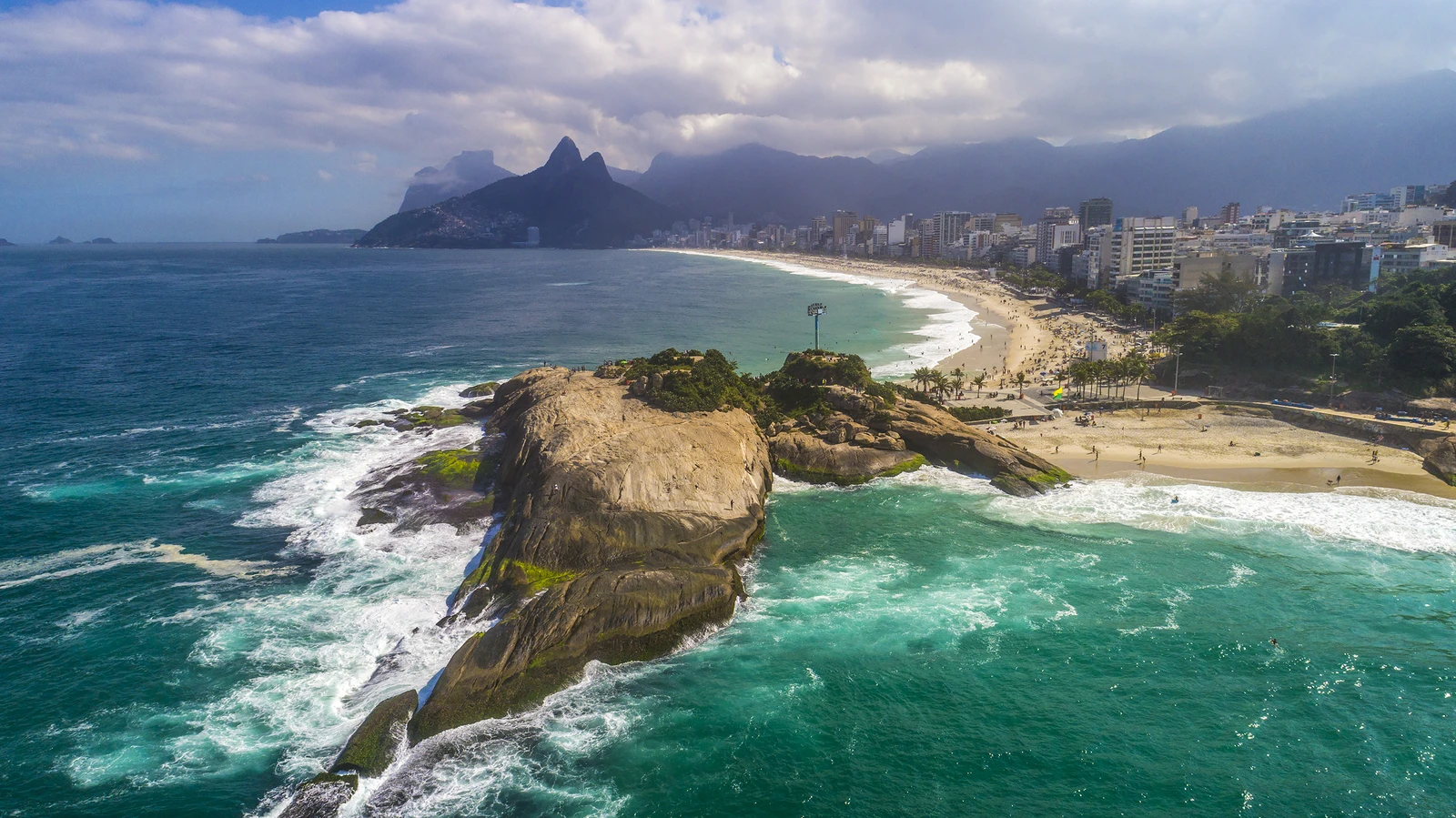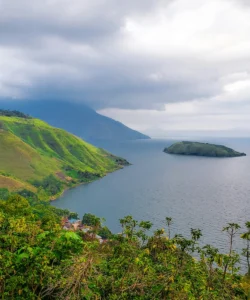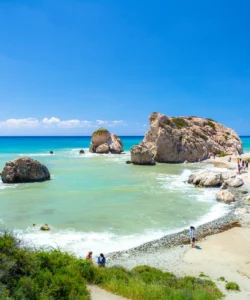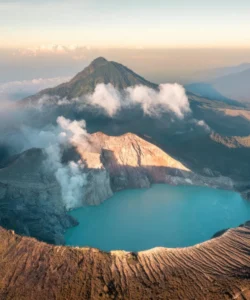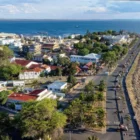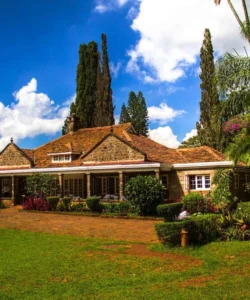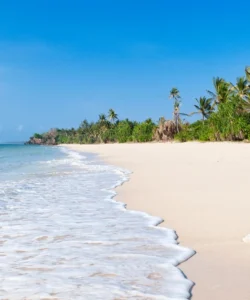Ipanema Beach (Praia de Ipanema) is a world-renowned beach in Rio de Janeiro, Brazil, situated just west of Copacabana. While equally stunning in its natural beauty, Ipanema is often perceived as more upscale, chic, and sophisticated. It rose to global fame with the the iconic Bossa Nova hit “The Girl from Ipanema” in the 1960s, becoming a symbol of Brazilian modernism, art, and intellectual life. Today, it continues to attract a trendy crowd, offering impeccable views, a vibrant beach culture, and a distinct sense of cool.
Listen to an introduction about Ipanema Beach

Name: Ipanema Beach (Praia de Ipanema)
Address: Avenida Vieira Souto, Rio de Janeiro, Brazil. The beach runs along Avenida Vieira Souto, from Arpoador Rock in the east to the Jardim de Alah canal in the west, which separates it from Leblon Beach.
How to get there:
Reaching Ipanema Beach, involves a significant international journey to South America, followed by domestic travel to Rio de Janeiro:
- From Rio de Janeiro to Ipanema Beach:
- By Metro (Subway): The most efficient way. Take Metro Line 1 or 4 to General Osório Station (Praça General Osório) or Jardim de Alah Station. Both are within easy walking distance (5-10 minutes) of the beach.
- By Bus: Numerous local bus lines run along Avenida Vieira Souto and the surrounding streets.
- By Uber/Taxi: Readily available throughout Rio and convenient for direct access.
- Walking: If you are staying in the Ipanema or Copacabana neighborhoods, the beach is easily accessible on foot. You can walk directly from Copacabana to Ipanema via Arpoador Rock.
Landscape and Architecture:
Ipanema Beach is a stunning natural beach with a stylish urban backdrop, framed by iconic mountains:
- Straight Stretch of Golden Sand: Unlike Copacabana’s crescent shape, Ipanema is a straighter, slightly shorter (approx. 2.6 km or 1.6 miles) stretch of soft, golden sand, also wide and gently sloping.
- Iconic Promenade (Calçadão de Ipanema): Similar to Copacabana, Ipanema also features a famous black-and-white mosaic promenade, but its pattern is a distinctive geometric checkerboard or wave design, conceived by Roberto Burle Marx.
- Avenida Vieira Souto: The upscale avenue running parallel to the beach, lined with luxurious apartment buildings, boutique hotels, trendy shops, and chic restaurants. The architecture here tends to be more modern and refined than Copacabana’s.
- Two Brothers Mountains (Morro Dois Irmãos): The most iconic natural backdrop, dominating the western end of the beach. These two distinct, towering peaks provide a breathtaking and highly photogenic silhouette, especially at sunset.
- Arpoador Rock (Pedra do Arpoador): Located at the eastern end of Ipanema, this prominent rock outcrop offers spectacular panoramic views of both Ipanema and Copacabana Beaches, and is a famous spot for watching the sunset, often accompanied by applause from onlookers. It’s also a popular surfing spot.
- Lifeguard Posts (Postos): Like Copacabana, Ipanema has numbered lifeguard posts (Posto 7, 8, 9, 10), which serve as social hubs for different groups (e.g., Posto 9 historically famous for bohemians, artists, and LGBTQ+ friendly crowds).
- Rodrigo de Freitas Lagoon: Just inland from Ipanema, this large, picturesque lagoon is surrounded by jogging and cycling paths, offering a serene contrast to the beach’s energy.
What makes it famous:
Ipanema Beach is famous for:
- “The Girl from Ipanema” Song: Its global fame was cemented by the iconic 1960s Bossa Nova song, which transformed it into a symbol of Brazilian cool, beauty, and sophistication.
- Stylish and Upscale Vibe: It attracts a more fashionable, intellectual, and affluent crowd compared to Copacabana, making it a hub for trend-watching and a more relaxed, chic atmosphere.
- Spectacular Sunsets: The sunsets from Ipanema, particularly from Arpoador Rock, with the Two Brothers Mountains in the background, are legendary and often draw crowds who applaud as the sun dips below the horizon.
- Vibrant Beach Culture: Known for its lively social scene, sports (volleyball, footvolley), and people-watching, especially around Posto 9.
- LGBTQ+ Friendly: Posto 8 and 9 are historically known as welcoming spots for the LGBTQ+ community.
- Surfing at Arpoador: The waves around Arpoador Rock are popular with surfers.
- Fashion and Arts Scene: The surrounding Ipanema neighborhood is known for its trendy boutiques, art galleries, and sophisticated dining.
Differences from some other wonders:
Ipanema Beach distinguishes itself from other famous beaches and coastal areas, particularly its neighbor Copacabana, in several key ways:
- Vibe & Atmosphere: Ipanema is widely perceived as more stylish, sophisticated, and chic, attracting a trendier and often more affluent crowd, contrasting with Copacabana’s broader, more democratic, and constantly bustling energy.
- Iconic Mountain Backdrop: Its unique and highly photogenic backdrop is the majestic Two Brothers Mountains, particularly stunning at sunset. This specific natural frame is a defining visual that sets it apart from other beaches.
- Promenade Design: While sharing the iconic black-and-white mosaic promenade, Ipanema’s features a distinct geometric checkerboard or wave pattern (different from Copacabana’s continuous waves), a subtle yet recognizable architectural differentiator.
- Cultural Symbolism: Ipanema became a global symbol of Brazilian modernism, sophistication, and a more bohemian intellectual life (fueled by the Bossa Nova movement), which is a distinct cultural narrative compared to Copacabana’s broader appeal as a democratic mass celebration venue.
- Artistic and Fashionable Hub: The surrounding neighborhood’s strong emphasis on boutique fashion, art galleries, and upscale dining reinforces Ipanema’s reputation as a more refined and culturally driven beach destination.
